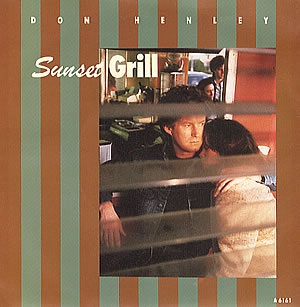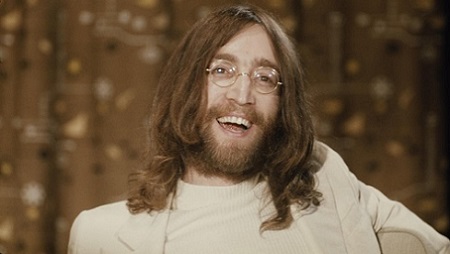The debut album of the band named Eagles was first published on June 1st, 1972. Bearing the name Eagles, the album rock, contemporary pop/rock, country-rock and soft rock album debuted with Bernie Leadon on banjo, guitar, steel guitar, Dobro, mandolin and vocals, Don Henley on drums, percussion and vocals, Glenn Frey on guitar, slide guitar, keyboards and vocals and Randy Meisner on bass guitar and vocals. Guest musicians David Sanborn on alto saxophone and Don Felder on guitar and organ also played on the album.

Take It Easy opens the album Eagles, having been released as a single on May 1, 1972. Charting as high as 12th in the United States, the song references Winslow, Arizona and a flatbed Ford as writing credits for the song are shared between Jackson Browne and Glenn Frey. Frey “says that he learned a lot about songwriting by listening to [Browne],” as quoted here.

Witchy Woman charted as high as ninth in the United States with writing credits resting with Bernie Leadon and Don Henley. As quoted here, the song is “about a number of women [Leadon and Henley] had met. It is not meant to portray the woman as devilish, but as more of a seductress.”

Chug All Night offers a clear example of the country-rock style for the album Eagles without relying strictly on instrumentation. The sentiment hits me on the country side while the sound plays as hard as any song on the album.
Most of Us Are Sad plays with a strong country sensibility with harmonizing vocals. The time measure of the song makes the song feel like a ballad. The sentiment of the song offers the singer’s sense of a romantic love lost with the emotional baggage to show for it.
Nightingale grants Jackson Browne a second writing credit for the album Eagles. The song emphasizes the value of a romantic love relationship along the means of protecting oneself from the chaos of the world around you with love.

Train Leaves Here This Morning rekindles a sad experience with a marriage coming to an end, with the singer planning, as quoted here, “to escape his romantic travails and head home on the morning train.” Gene Clark and Bernie Leadon recorded the original version of this song with their group Dillard & Clark in 1968. As Leadon is quoted as saying here, “The Eagles rendition is very country, folky and stripped-down”. “There’s electric lead, electric bass and drums, but they’re lightly played.”
Take the Devil offers self-contemplation on what a soul, divine love and, dare I say, self-love and/or self-acceptance of a spiritual kind can be. The journeys of a restless spirit in searching for these meanings leads the singer to contemplate these points, judging the wandering temptations of the Devil; it is with these self-discoveries that the singer wishes to be done with this influence.
Earlybird feels like it could be a declaration of the organizing self-view of what the bandmates of Eagles see themselves to be. The notion of playing their music and reading the books they choose to find peace of mind while never fading into meaninglessness or lack of regard is the point-of-view of the band in the year of the album’s recording and release in 1972.
Peaceful Easy Feeling was written by singer-songwriter Jack Tempchin, whose rendition can be heard here. As quoted here, the Eagles’ “song evokes a state of tranquility. The lyric, however, is about a girl, with Glenn Frey singing about how he'[d] love for things to work out with her, but thinks she’ll probably leave in the end. He’ll be OK though, since he has a peaceful, easy feeling and he won’t let her ruin it no matter what happens.”

Tryin’ closes the album as the third song with Randy Meisner on lead vocals. The song invokes the young man’s seeking purpose while learning from and making mistakes along the road of continued effort to land at the place life is heading. Upwards and onwards, Randy Meisner.
Matt – Saturday, June 1, 2024

































 (Album cover for Superunknown by Soundgarden).
(Album cover for Superunknown by Soundgarden). (The CD Single for the song Fell on Black Days by Soundgarden. The song was released in support of the album Superunknown).
(The CD Single for the song Fell on Black Days by Soundgarden. The song was released in support of the album Superunknown). (From left, guitarist
(From left, guitarist  (The CD Single for the song The Day I Tried to Live by Soundgarden. The song was released in support of the album Superunknown).
(The CD Single for the song The Day I Tried to Live by Soundgarden. The song was released in support of the album Superunknown).